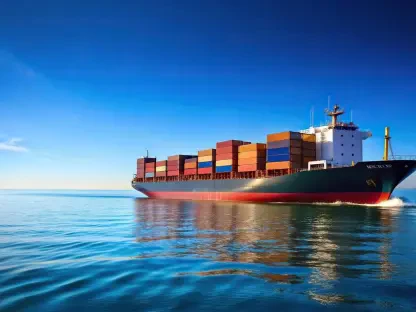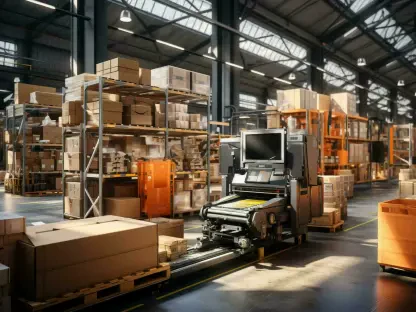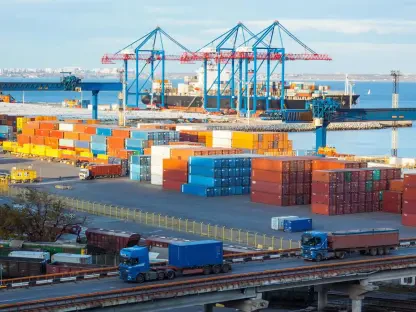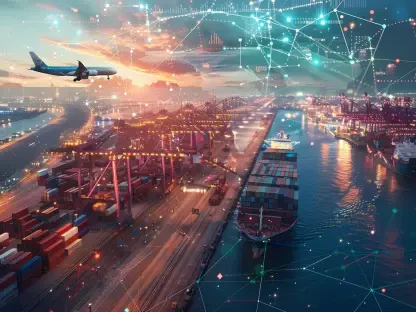In a transformative move for global trade dynamics, India has unveiled an ambitious initiative to bolster its maritime capabilities through the launch of the Bharat Container Shipping Line (BCL), a cornerstone of the Maritime India Vision 2047 policy, signaling a bold shift toward self-reliance in the shipping sector. This strategic endeavor, announced by Prime Minister Narendra Modi during a prominent industry forum in Mumbai, aims to redefine trade efficiency. With the nation historically grappling with dependency on foreign shipping companies, leading to inflated costs and capacity constraints, this development is a proactive step to secure a stronger position in international logistics. By prioritizing domestic control over critical infrastructure, India seeks to mitigate the risks exposed during global supply chain disruptions. This initiative promises to reshape the landscape of maritime trade, offering a glimpse into a future where economic resilience and logistical autonomy go hand in hand.
Strategic Vision for Trade Autonomy
India’s push for maritime self-sufficiency through the Bharat Container Shipping Line emerges from a pressing need to address longstanding trade inefficiencies. For decades, reliance on foreign shipping entities has burdened Indian exporters and importers with high freight costs and unpredictable vessel availability, a challenge that became painfully clear during global crises like the COVID-19 pandemic. The launch of BCL, backed by the Maritime India Vision 2047 policy, represents a deliberate effort to reduce these dependencies. Starting with an initial fleet of 51 vessels and a goal to expand to 100, the initiative is designed to stabilize costs and ensure consistent access to shipping capacity. Supported by a substantial $6.9 billion investment through the Maritime Development Fund, though the precise government contribution remains undisclosed, BCL is poised to transform how India engages in international trade, particularly with key regions like Asia, including China, West Asia, and the Red Sea, while eyeing future expansion to Europe and the Americas.
Beyond immediate operational goals, the broader vision encompasses a fundamental restructuring of India’s trade ecosystem to prioritize economic security. The establishment of BCL is a direct countermeasure to the vulnerabilities of outsourcing critical shipping needs, aiming to create a reliable framework for businesses. This initiative aligns with national aspirations to lower trade barriers and enhance competitiveness on the global stage. By focusing initial operations on high-traffic Asian routes, the container line sets a foundation for gradual expansion, ensuring that logistical challenges are addressed systematically. Industry stakeholders view this as a pivotal moment to redefine supply chain dynamics, reducing the unpredictability that has long hindered growth. Moreover, the integration of domestic shipping capacity with broader policy objectives underscores a commitment to long-term resilience, positioning India as a formidable player in maritime trade with a clear roadmap for scaling operations over the coming decades, potentially up to 2047.
Collaborative Framework and Key Stakeholders
The operational backbone of the Bharat Container Shipping Line hinges on a robust partnership between major industry players, ensuring a seamless logistics network. The Shipping Corporation of India (SCI), a publicly listed entity with ambitions to grow its fleet to 216 vessels by 2047, takes the lead in managing chartering and vessel operations. Meanwhile, the Container Corporation of India (CONCOR), also listed and supported by prominent international shareholders, leverages its extensive rail and inland logistics infrastructure to facilitate efficient freight movement to and from ports. This collaboration is crafted to create an integrated supply chain, addressing bottlenecks that have historically slowed trade processes. By combining maritime and terrestrial logistics expertise, the partnership aims to streamline operations, offering a model of efficiency that could serve as a benchmark for other nations looking to enhance their trade frameworks.
This cooperative approach extends beyond mere operational logistics to embody a shared vision for national economic growth. The synergy between SCI and CONCOR is expected to minimize delays and reduce costs associated with disjointed supply chains, directly benefiting Indian businesses. Their combined efforts are geared toward ensuring that goods move swiftly from production hubs to international markets, reinforcing trade reliability. Additionally, the involvement of international stakeholders in CONCOR brings a global perspective to local operations, potentially easing the transition into broader markets. This integrated model not only tackles immediate logistical challenges but also sets the stage for sustainable growth in shipping capacity. As these entities work together, the initiative reflects a balanced approach to public-private collaboration, highlighting how strategic alliances can drive large-scale infrastructure projects while addressing the nuanced needs of a diverse trade ecosystem.
Investments and Challenges in Maritime Growth
India’s maritime ambitions extend well beyond the launch of the Bharat Container Shipping Line, encompassing significant investments in infrastructure modernization. A staggering $26 billion has been allocated for vessel orders, including 437 ships ranging from container carriers to environmentally friendly tugs and dredgers for the Dredging Corporation of India. These investments signal a strong commitment to updating aging fleets and adopting sustainable practices in line with global environmental standards. Such efforts are crucial for maintaining competitiveness in an industry increasingly focused on green technologies. By prioritizing eco-friendly vessels, the nation aims to align with international expectations while enhancing port efficiency and capacity. This comprehensive approach to maritime development underscores a determination to build a future-ready shipping sector capable of meeting both domestic and global demands.
However, the path to realizing these ambitious goals is fraught with financial hurdles that could impede progress. Industry leaders and vessel operators have voiced concerns over the scarcity of long-term financial instruments, such as 30- to 50-year loans, from private sector entities. Without innovative funding solutions, the scale of infrastructure projects envisioned under the Maritime India Vision 2047 policy risks being curtailed. These financial constraints highlight a critical gap between ambition and execution, necessitating creative approaches to attract investment. While government backing provides a foundation, the reliance on private capital remains a sticking point. Addressing these challenges will require a concerted effort to develop tailored financial products that match the long-term nature of maritime investments, ensuring that the momentum behind initiatives like BCL is not lost to budgetary limitations.
Building a Resilient Future
Reflecting on the strides made with the Bharat Container Shipping Line, it’s evident that India has taken decisive action to reshape its maritime landscape. The initiative, launched with a clear focus on reducing trade costs and enhancing capacity, marked a turning point in addressing historical dependencies on foreign shipping. Backed by key stakeholders and substantial investments, the rollout of BCL and related infrastructure projects showcased a national resolve to prioritize economic autonomy. Industry concerns over financing were acknowledged, underscoring the complexities of such large-scale endeavors. Looking ahead, the focus has shifted to crafting innovative funding mechanisms to sustain this momentum. Strengthening public-private partnerships emerged as a vital next step, alongside policies to encourage long-term investments. By navigating these challenges, India positioned itself to potentially redefine its role in global trade, ensuring that the vision of maritime strength translates into tangible economic gains for future generations.









